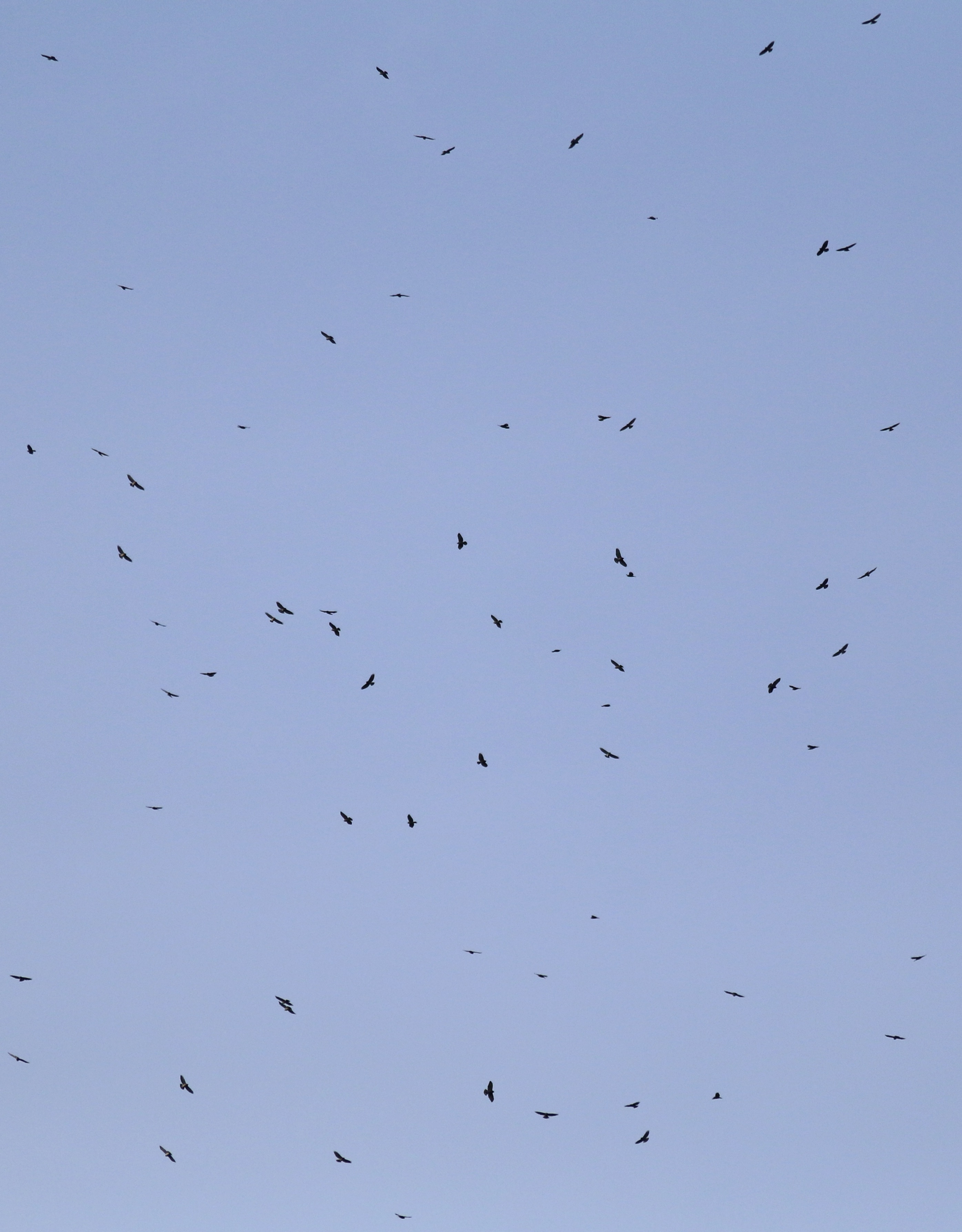
I got out of work late today, but not too late to get up to Mount Peter Hawkwatch. I arrived just after 4:00 pm and joined official counter Ajit Antony, Judy Cinquina, Tom Millard, Denise Farrell, and Gerhard and Tracy Patsch on the viewing platform. Apparently, I had missed several large kettles of Broad-winged Hawks! I was bummed, but not for long. About twenty minutes later, we had a huge group of Broad-winged Hawks coming in, just to the west of the platform. Many streamed straight through, very high up. Then two kettles formed over the valley at the same time just a few binocular fields apart. One of them was low enough and large enough to be seen naked eye. In all, over 750 BWHAs had just passed over! I was able to fire off a few photos, but really the photos don’t come close to doing the experience justice. It was so AWESOME! It was a really good day at the watch with a total of 1,887 migrating hawks!
We had a steady number of migrating hawks until right around 5:30, when the skies seemed to empty. At that point, I headed to 6 1/2 Station Road Sanctuary. I was following a lead from Bruce Nott – he told me that a dowitcher had been reported there the day before. When I arrived, I was already losing the light. I was pleasantly surprised when I quickly located the dowitcher. I took a bunch of photos and then called John Haas, who had recently had a Long-billed Dowitcher in Sullivan County. I remembered from his post that for LBDO, the tail typically would have thicker black bands than white, which this bird appeared to have. John had me look to see if the tertials had pale edging, which to my eye was the case with this bird. When I got home, knowing how difficult it can be to identify birds with just photos, I emailed several to John. The birds were a little bit distant and of course the light was low, which made for less than ideal pictures, but looking at them, he indicated he could not see any rufous on the edge of the tertials, and that the scapulars which haven’t been molted yet appear to have totally black centers (no rufous ribbing up the middle). Also, the feeding shot I sent over shows a hunch-backed appearance. All of these indicate LONG-BILLED DOWITCHER! Back in October of 2013, I had a pair of LBDOs in this same location, so it is certainly not out of the question. I will submit to eBird and see if the reviewer agrees with this assessment. Any thoughts on this bird please feel free to comment.




Congratulations on another great bird Matt!
Thanks once again for all your help John! Matt
Great job Matt, as always.
Wilma
Thanks so much Wilma! Matt
The Broad-wingeds sound amazing!! Happy for you!!
Thanks Karen, it was really good timing! Matt